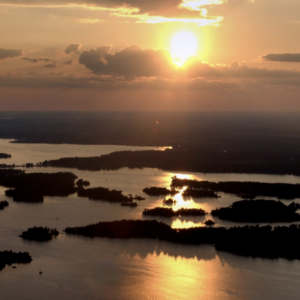Why Lake Ontario’s Eastern Basin is a Biogem that Needs Protection
Lake Ontario is a site of extraordinary biodiversity. It’s home to many native species and species at risk, with its shallow nearshore waters providing critical feeding and reproductive habitat for wildlife both on land and in the water.
Together, the Great Lakes form one of the largest freshwater systems on Earth, but only 27 percent of their coastline is protected. The water within the lakes is even more at risk, with only 9.4 percent protected for conservation purposes.
Despite its ecological value and endangered species, Lake Ontario is one of the least protected Great Lakes. The Eastern basin in particular has the potential for crucial conservation work that could protect migratory habitat for birds and species at risk while improving the health and connectivity of water and land ecosystems.
That’s why we need a National Marine Conservation Area (NMCA) to safeguard the region’s biodiversity and contribute towards the government’s goal of protecting 25 percent of land and waters by 2025.
Who needs protection? Meet some Lake Ontario’s species at risk:
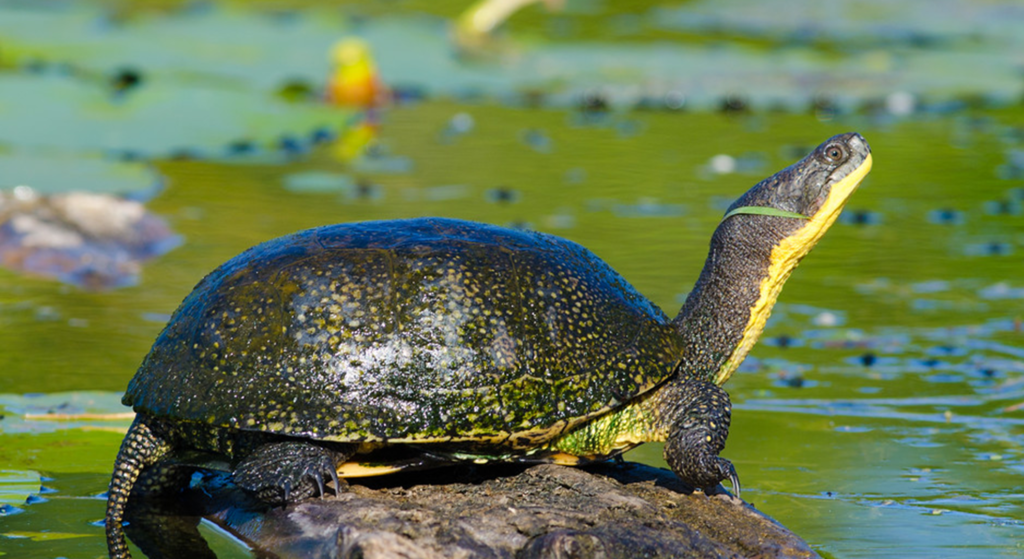
1. Blanding’s Turtle
Despite being able to live to be 80 years old, Blanding’s Turtles are disappearing and are a species at risk in Ontario. They may have long natural lifespans, but Blanding’s Turtles remain unprotected from their greatest threats: habitat loss and road mortality.
Blanding’s Turtles live in wetlands and shallow lake areas. They need lots of aquatic plants to call their habitat a home. But as their homes are degraded, developed, and fragmented, they must travel further distances to find suitable habitats and nesting sites. Their journeys frequently include crossing roads in order to find places to survive, and too often, they are run over and killed by passing cars.
2. Pugnose Shiner
One of the rarest minnows in eastern North America, these timid fish live in nearshore areas and coastal embayments in Wellers Bay, West Lake, East Lake, and Smith Bay. Pugnose Shiners are threatened by habitat degradation, including the alteration and destruction of wetlands and increased erosion from shoreline development.
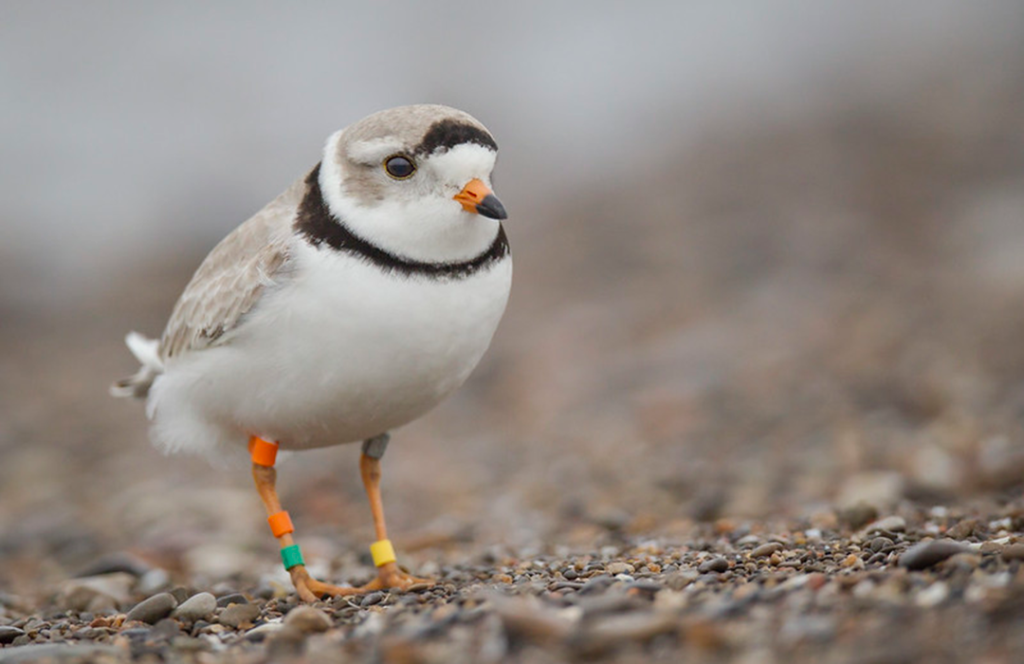
3. Piping Plover
These small shorebirds can be seen running across the wet sand, their legs a blur. But we are not seeing them as often as we should. In the past 50 years, Piping Plovers have declined throughout the Great Lakes region.
Piping Plovers are vanishing due to shoreline development. As beaches are adapted for human use, these birds become more vulnerable to predators and their nests are destroyed in the developing process.
There is hope for Piping Plover populations if we give them the protection they need. Conservation efforts have begun to help repopulate former breeding sites across Lake Ontario’s coastlines, and since 2007, some Piping Plovers have started to rebuild their lives and their nests in the Eastern basin near Presqu’ile Park.
4. Deepwater Sculpin
As its name suggests, Deepwater Sculpin live in the cold, deep waters of Lake Ontario. These fish play a crucial role in the food chain by transferring nutrients from benthic invertebrates like crustaceans and larvae to top predators like Lake Trout.
Once abundant, their populations have been declining due to habitat loss and degradation, as well as the impacts of aquatic invasive species.
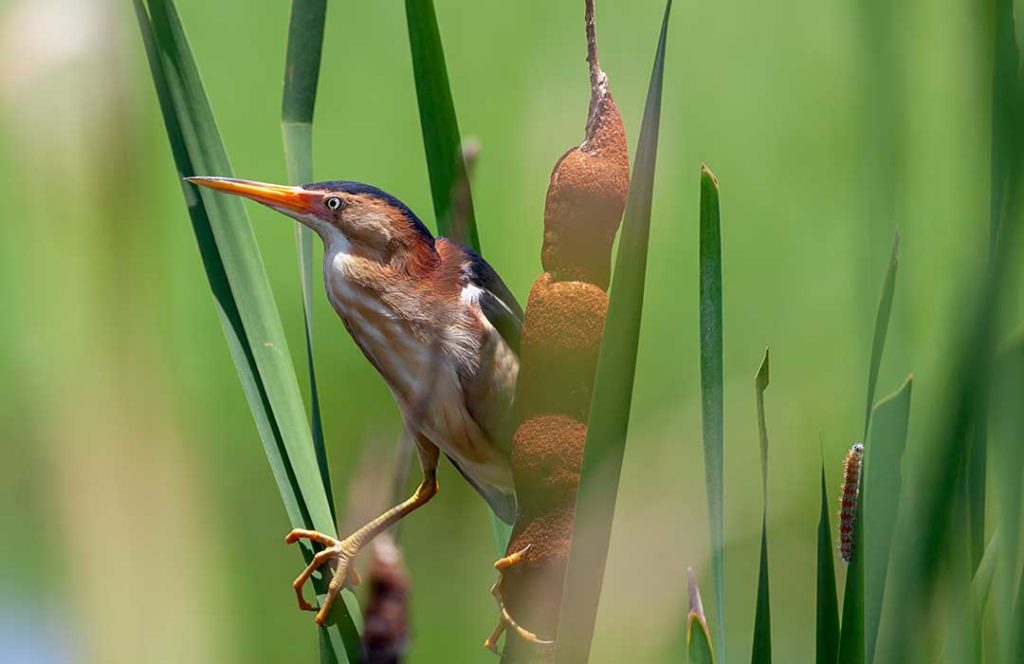
5. Least Bittern
The smallest member of the heron family, this bird lives in coastal wetlands around Lake Ontario’s eastern basin.
Least Bittern populations have experienced huge declines due to habitat degradation and development. These birds are sensitive to human disturbances like lights, loud noises, and wake from boats.
What do these species at risk need protection from?
It’s clear that these species are up against a lot. In fact, land development has hardened 25 percent of Prince Edward County’s shoreline, leaving wildlife with fewer and fewer places to go.
Development continually degrades important shoreline habitats for species like the Blanding’s Turtle and Piping Plover, replacing greenspace with concrete, steel, and other man-made materials and making wetlands unappealing homes for the Least Bittern. Habitat degradation also threatens those aquatic residents further out in Lake Ontario, like the Pugnose Shiner and Deepwater Sculpin.
With industry taking over shorelines, runoff pollution contaminates habitats for sensitive species, while invasive species like Quagga Mussels, Round Goby, Alewife, and Sea Lamprey harm native species by competing for food sources and even going so far as to attack, injure, and kill them.
Climate change, of course, adds another layer of uncertainty to the survival of these species at risk, as it changes our land, weather, and water like never before.
But perhaps the biggest, most all-encompassing threat to some of Lake Ontario’s most vulnerable species is the very lack of protection that could easily save them. Despite the government’s promise to protect 25 percent of land and freshwater by 2025, the Great Lakes remain largely unprotected.
The lower Great Lakes in particular, and especially Lake Ontario’s eastern basin, are in need of National Marine Conservation Areas to halt and restore the damage that has been done and safeguard ecosystems and the species at risk living in them for the future.
It’s not too late. Yet.
Since 2015, the number of species at risk in Ontario rose to 243, marking an 8 percent increase. Prince Edward County in the heart of the Eastern basin is home to over 50 species at risk that need to be protected.
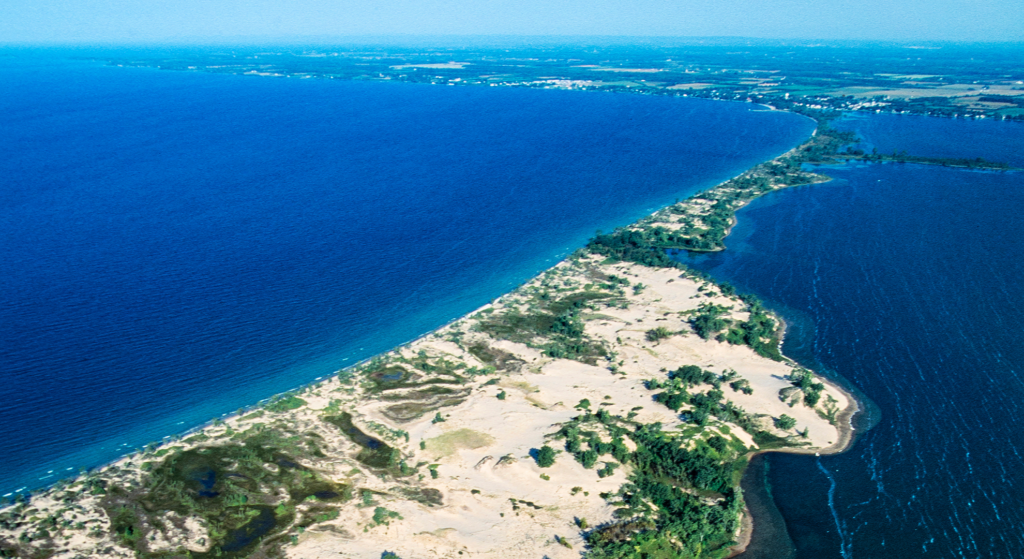
How do National Marine Conservation Areas (NMCAs) protect species at risk?
An NMCA in Eastern Lake Ontario would make all the difference in protecting this delicate ecosystem. Under an NMCA, harmful in-lake activities like oil and gas exploration, mining, trawling the lake bed and dumping would be prohibited. The freshwater system would flourish, and grow towards a healthy future.
There would be much more protection for the habitats of native and at-risk species, with land and water development as well as the introduction of aquatic invasive species prevented. Wetlands would protect areas from flooding, improve water quality, and promote biodiversity in habitats. All of this would be good news for people, Piping Plovers, Blanding’s Turtles, and Least Bitterns! An NMCA would even protect Pugnose Shiner and Deepwater Sculpin’s habitat from further degradation and increase measures to address invasive species that threaten it.
We’re losing biodiversity at an unprecedented rate. But an NMCA in Lake Ontario would make all the difference for our natural world.
You can help protect species at risk
How can you help make protection a reality for Blanding’s Turtles, Piping Plovers, Pugnose Shiners, Deepwater Sculpin, Least Bittern, and so many other species at risk? It’s easier than you think.
First, you can send a letter in support of the creation of an NMCA in Lake Ontario’s Eastern basin to the government—they won’t take action without public support. Then, you can pay a visit to this fascinating area. From fishing, to birdwatching, to shipwreck diving, to paddling, to sightseeing, discovering Eastern Lake Ontario for yourself will encourage you and those around you to advocate for its protection.


